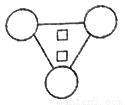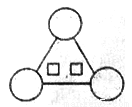题目内容
Public Speaking Training
△Get a coach
1., so get help. Since there are about a billion companies out there all ready to offer you public speaking training and courses, here are some things to look for when deciding the training that’s right for you.
△Focus on positives
Any training you do to become more effective at public speaking should always focus on the positive aspects of what you already do well. Nothing can hurt confidence more than being told that you aren’t doing well.2., so good public speaking training should develop those instead of telling you what you shouldn’t do.
△ 3.
If you find a public speaking course that looks as though it’s going to give you lots of dos and don’ts, walk away! Your brain is so full of what you’re going to be talking about. 4. As far as we’re concerned, there are basically no hard and fast rules about public speaking. Your audience can be your friends.
△You are a special person not a clone
Most importantly, good public speaking training should treat you as a special one, with your own personal habits. 5.. Your training course should help you bring out your personality, not try to turn you into someone you’re not.
A. You aren’t like anybody else
B. You already do lots of things well
C . Turn your back on too many rules
. Turn your back on too many rules
D. Check the rules about dos and don’ts
E. Whatever the presentation, public speaking is tough
F. The one thing you don’t want is for them to fall asleep
G. So trying to force a whole set of rules into it will just make things worse
LOST AND FOUND | ROOMMATES |
FOUND: Cal, 6 months old, black and white marking. Found near Linden and South U. Steve, 800-4661. | FEMALE ROOMMATE WANTING Own room near campus. Available December 1. Rent $ 80 per month until March 1. $ 129 Thereafter. Call Jill for details. 800-7839 |
LOST: Gold wire rim glasses in brown case. Campus area. Reward. Call Gregg 800-2896 | Need person to assume lease for own bedroom in apt. Near campus, $ 92/mo. Starling Jan. 1. Call 800-6157 after 5 pm |
FOR SALE | HELP WANTED |
MOVING: Must sell. TV b/w 12, $ 50; AM/FM transistor radio A/C or battery, %15; cassette tape recorder, $ 10; music records, Call John or Pat, 800-0739 after 5 pm or weekends | BABYSITTER—MY HOME If you are available a few hours during the day, some evenings and occasional weekends to care for 2 school-age children, please call Gayle Moore days at 800-1111,evenings and weekends at 800-4964 |
USED FUR COATS and JACKETS Good condition. $ 50- $ 125. Cull 800-0436 after 12 noon | WAITRESS WANTED: 10 am-2 pm or 10: 30 am-5 pm. Apply in person, 207S. Main Curtis Restaurant |
1.What was lost in campus area according to the LOST AND FOUND ads?
A. A cat. B. A radio.
C. A cassette tape recorder. D. A pair of glasses.
2.You will have to call if you want to buy a radio.
A. 800-0436 B. 800-0739
C. 800-4964 D. 800-4661
3.Which of the following ads will you answer if you want a job of taking care of children?
A. LOST AND FOUND B. ROOMMATES
C. HELP WANTED D. FOR SALE


 B.
B. 
 D.
D. 